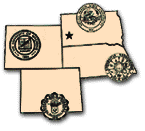Animal Science, Department of

Range Beef Cow Symposium
Date of this Version
December 1995
Document Type
Article
Abstract
Concentration in the packing industry has resulted in 5 major packers processing over 75 percent of the cattle on feed. During the last cattle cycle, total cattle numbers declined at the same time packers were increasing chain speeds and increasing individual plant volumes. From 1987 through 1992 the cow herd did not expand, therefore, supplies of fed cattle were consumed easily by existing packing facilities. All packers participated in the cash market to some extent, but in order to guarantee sufficient supplies of fed cattle in short supply situations, packers fed their own cattle, actively contracted cattle, and created marketing agreements priced on a formula basis. Price discovery of fed cattle became more difficult as more cattle were sold on contract or formula. The cash price is used in determining formula pricing but as the volume of cash cattle traded becomes smaller in relation to the volume of formula cattle, price reporting may become more unreliable.
Another trend which has evolved during the last cattle cycle is the practice of buying cattle on averages. Cattle of varying degrees of quality sell at basically one price. Average to below average cattle benefit from this practice, but high grading, high cutability cattle are less likely to receive full value. Consequently, the benefits of good breeding programs are masked by this process of selling on the average.
Much research has been done to establish the value differences of cutability. Yield grades have been used for many years to denote muscling. As consumer preferences for more lean and less fat grow, the value of cutability becomes more important.
Table 1 was compiled by Texas A&M. This table shows the value of yield grade differences with 1 inch, 1/2 inch, and 1/4 inch of outside fat trim. As more product is sold on a closely trimmed basis, the value of one full point of yield grade increases. For example, at one inch of trim, the value improvement of a yield grade 2 choice steer is $2.52 per cwt of carcass over a yield grade 3 choice steer or approximately $20.00 per head on an 800 pound carcass. When cut to 1/4 inch specifications, the value differences is $3.88 per cwt of carcass or $31.00 per head.


Comments
Published for Proceedings, The Range Beef Cow Symposium XIV December 5, 6 and 7, 1995, Gering, Nebraska.